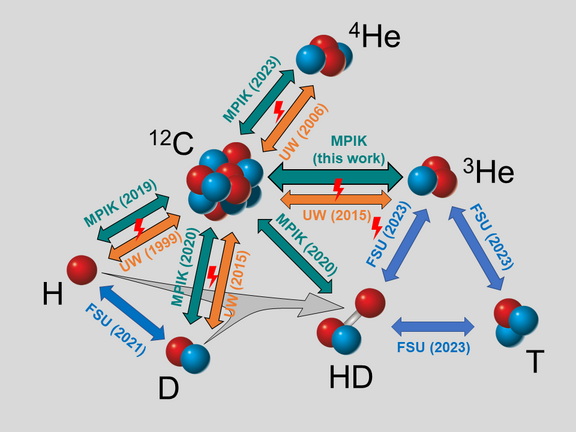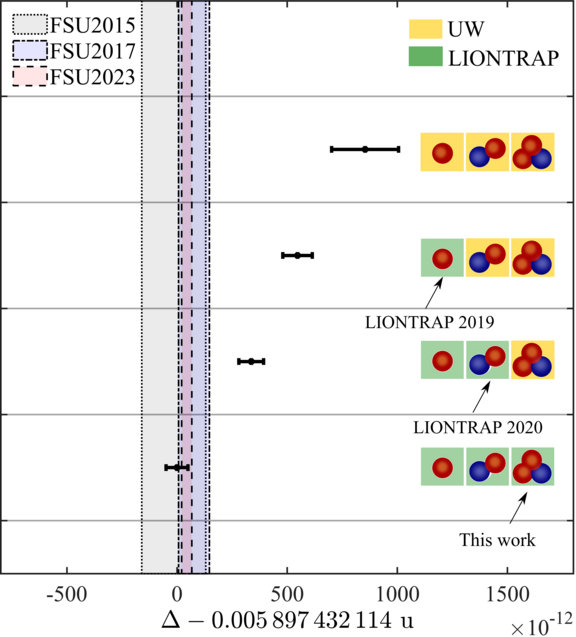|
Previous studies using the high-precision Penning trap for light ions (LIONTRAP) succeeded in measuring the masses of the proton, the deuteron and the alpha particle with unprecedented precision. However, the results differ significantly from those by the University of Washington (UW), which either contributed to or served as previous literature values while, on the other hand, agree with mass ratios measured at the Florida State University (FSU). These inconsistencies, called the “light ion mass puzzle”, are illustrated in Fig. 1.
The last missing link, a remeasurement of the 3He mass directly relative to the carbon mass standard using LIONTRAP was now performed by physicists from the Max-Planck-Institut für Kernphysik in Heidelberg (MPIK) and the GSI Helmholtzzentrum für Schwerionenforschung Darmstadt. From the the cyclotron frequency ratio of 3He+ and 12C4+ ions measured with 12 parts per trillion relative precision the atomic mass of 3He was determined to be 3.016 029 322 011(35) u.
Fig. 2 illustrates the progress in resolving the puzzle of light nuclear masses by examining the difference Δ between the summed proton (p) and deuteron (d) masses and the mass of the 3He nucleus (he). While the data solely based on the UW measurements deviate significantly the FSU values the new results from LIONTRAP and FSU are mutually consistent. Although not directly part of the puzzle, the deviation of the LIONTRAP result for the α particle (4He) reported in 2023 from the UW value supports this interpretation. Further mass measurements of light ions are planned at the PENTATRAP experiment at MPIK.
Original publication:
Penning-trap mass measurement of 3He
O. Bezrodnova, S. Sasidharan, W. Quint, S. Sturm and K. Blaum
Physical Review A 111, L040801 (2025). DOI: 10.1103/PhysRevA.111.L040801
Weblinks:
Precision mass spectrometry at MPIK

